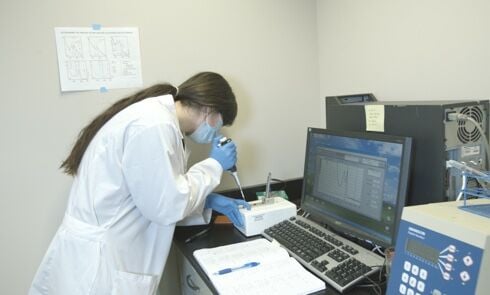Functional Fluidics offers a suite of assays to clinical providers, pharmaceutical, academic, and biotech partners to help support new drug development and overall patient care.

Our Services
Functional Fluidics is striving to be the gold standard in red blood cell (RBC) health, beginning with Sickle Cell Disease. We provide monitoring services for clinical studies using our assays to quantify the effects of a drug on blood function over time. We also partner with Clinicians to develop companion diagnostics to help enable them to pair the right treatment with the right patient, at the right time.

Services for Clinical Providers, Academic, Pharma & BioTech Partners
Our proprietary biomarker support drug validation and patient monitoring:
- Clinical Providers on the front lines caring for patients who need clinical tools to help monitor care.
- Pharmaceutical & Biotech companies developing therapies that affect the health of red blood cells
- Academics studying subjects and measurement of blood function through baseline and crisis events.

Our Services
Functional Fluidics offers the following services
-

Send Out Testing Services for Clinicians
The clinical pain and fatigue characteristic of sickle cell disease is difficult to objectively quantify. Clinicians cannot depend on their physical exam, imaging studies, or laboratory data to validate claims of pain by their patients. This challenge often creates physician and patient dissatisfaction and makes it difficult to assess individual patient response to modifying therapy.
Functional Fluidics is a certified CLIA lab with biomarkers that may help objectively assess patient-reported outcomes (PROs) and response to disease modifying therapy.
LEARN MORE -

Contract Research Services for Pharma and Biotech Companies
Functional Fluidics is well-positioned to address the needs of clients with large-scale validation studies and provide insights into the individual patient-level response critical for development of personalized medical applications. Our CLIA-certified lab is available for both high-throughput cell function testing, and to assaying unique patient samples, to answer questions related to drug safety of mechanisms of action.
Functional Fluidics provides testing solutions to support our pharmaceutical and academic research partners across the continuum of drug development, with a specialized focus on red blood cell modifying therapies.
LEARN MORE
Why Choose Functional Fluidics?
-

Proprietary Lab Tests
-
.png?width=80&name=New%20Project(1).png)
CLIA Certified Lab
-
.png?width=106&name=New%20Project(5).png)
Complex Tests Experience
-
.png?width=106&name=New%20Project(2).png)
Thought Leader Access
-
.png?width=80&name=New%20Project(3).png)
Specialized Staff
-
.png?width=106&name=New%20Project(4).png)
Strong Industry Relationships
